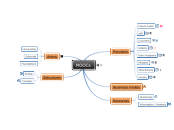by Remek Debski 16 years ago
556
Macroeconomics - 2HH3 - Chapter 3
The study of macroeconomics often involves an in-depth analysis of various economic variables and their interactions over time. Key areas of focus include the measurement of the business cycle and the components of Gross Domestic Product (









